
Malasaña: The Heartbeat of Madrid's Counterculture
Discover Malasaña: Madrid's epicenter of counterculture, art, and vibrant nightlife, offering a unique blend of history, creativity, and culinary delights.
Malasaña is the vibrant and eclectic neighborhood that pulses with the spirit of Madrid’s counterculture. Located in the heart of the city, it is a colorful tapestry of history, art, and modernity, making it an unmissable destination for any visitor. As you stroll through its narrow streets, you'll encounter an array of street art, vintage shops, and lively bars that capture the essence of Madrid’s bohemian lifestyle. Historically, Malasaña is renowned for its pivotal role in La Movida Madrileña, the cultural movement that swept through Spain in the late 1970s and early 1980s. This revolutionary period of freedom and creativity is still palpable in the neighborhood today, with many venues celebrating its legacy through music, art, and nightlife. Plaza del Dos de Mayo stands as a central hub in Malasaña, where locals and tourists alike gather to enjoy the neighborhood's infectious energy. Beyond its historical significance, Malasaña offers a culinary journey unlike any other. From traditional Spanish tapas bars to trendy vegan cafes, the dining options are as diverse as the neighborhood itself. Don’t miss visiting the unique boutiques and second-hand stores that line the streets, where you can find everything from handmade jewelry to rare vinyl records. Whether you’re an art lover, a history buff, or just someone looking to soak in the local atmosphere, Malasaña promises an unforgettable experience. Its blend of old-world charm and contemporary flair makes it a neighborhood that truly encapsulates the dynamic spirit of Madrid.
Local tips in Malasana
- Visit early in the morning to enjoy the streets before they get crowded.
- Check out the vintage shops on Calle Velarde for unique finds.
- Experience the local nightlife at iconic bars like Tupperware and La Vía Láctea.
- Take a break at Plaza del Dos de Mayo to people-watch and soak in the local vibe.
- Don’t miss the street art, especially around Calle de la Palma and Calle de San Andrés.
- Try churros and chocolate at the famous Chocolatería San Ginés nearby.
Malasaña: The Heartbeat of Madrid's Counterculture
Malasaña is the vibrant and eclectic neighborhood that pulses with the spirit of Madrid’s counterculture. Located in the heart of the city, it is a colorful tapestry of history, art, and modernity, making it an unmissable destination for any visitor. As you stroll through its narrow streets, you'll encounter an array of street art, vintage shops, and lively bars that capture the essence of Madrid’s bohemian lifestyle. Historically, Malasaña is renowned for its pivotal role in La Movida Madrileña, the cultural movement that swept through Spain in the late 1970s and early 1980s. This revolutionary period of freedom and creativity is still palpable in the neighborhood today, with many venues celebrating its legacy through music, art, and nightlife. Plaza del Dos de Mayo stands as a central hub in Malasaña, where locals and tourists alike gather to enjoy the neighborhood's infectious energy. Beyond its historical significance, Malasaña offers a culinary journey unlike any other. From traditional Spanish tapas bars to trendy vegan cafes, the dining options are as diverse as the neighborhood itself. Don’t miss visiting the unique boutiques and second-hand stores that line the streets, where you can find everything from handmade jewelry to rare vinyl records. Whether you’re an art lover, a history buff, or just someone looking to soak in the local atmosphere, Malasaña promises an unforgettable experience. Its blend of old-world charm and contemporary flair makes it a neighborhood that truly encapsulates the dynamic spirit of Madrid.
Iconic landmarks you can’t miss
Plaza Mayor
Discover the vibrant heart of Madrid at Plaza Mayor, a historical landmark filled with culture, dining, and unforgettable experiences in a stunning architectural setting.
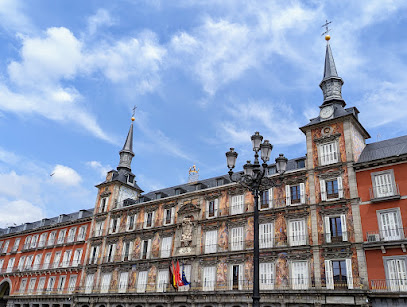
Plaza de España
Explore the historic Plaza de España in Madrid, a stunning square surrounded by remarkable architecture, lush gardens, and vibrant culture.
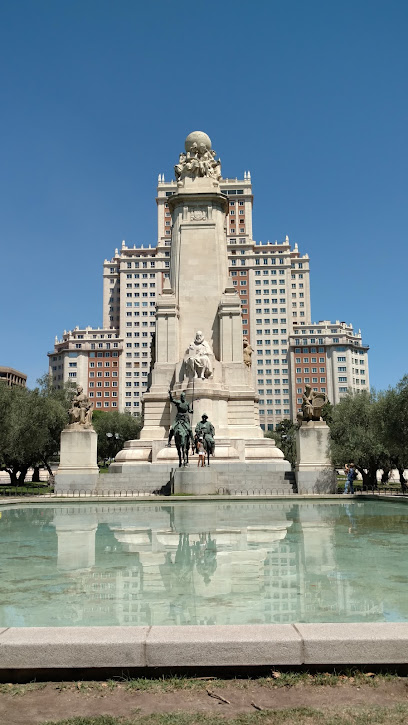
Royal Palace of Madrid
Discover the Royal Palace of Madrid, a breathtaking historical landmark rich in royal heritage and stunning architecture, located in the heart of Spain's capital.
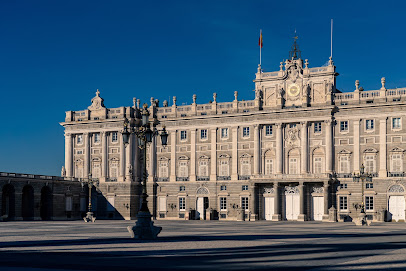
Plaza del Dos de Mayo
Experience the vibrant heart of Madrid at Plaza del Dos de Mayo, a historic square filled with culture, relaxation, and lively entertainment.

Church of Saint Anthony of the German
Explore the stunning Baroque and Neoclassical architecture of the Church of Saint Anthony of the German, a hidden gem in Madrid's vibrant Centro district.
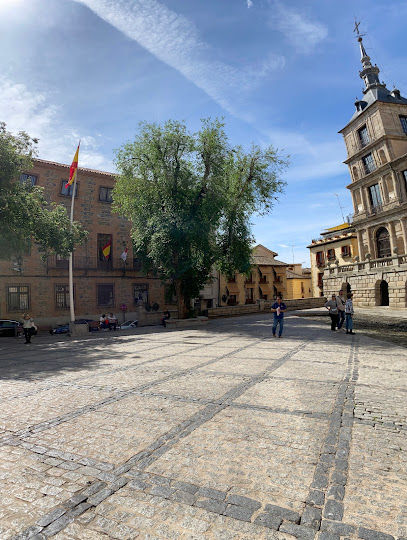
Plaza de la Armería
Discover the vibrant Plaza de la Armería, a cultural hotspot in Madrid surrounded by historic architecture and lively atmosphere.

Plaza Del Gral. Vara De Rey
Experience the vibrant atmosphere of Plaza Del Gral. Vara De Rey, a charming plaza in the heart of Madrid, rich in culture and local flavor.
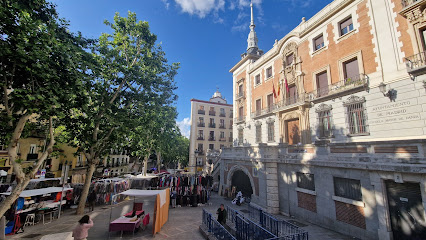
Historical Walls
Explore the Historical Walls of Madrid, a journey through time revealing the city's ancient fortifications and rich cultural heritage.
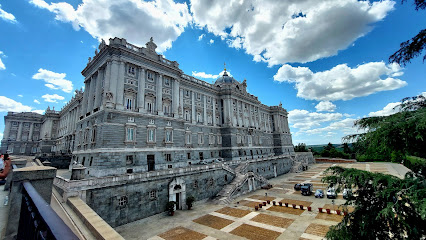
La Estudiante de Malasaña
Experience the artistic allure of La Estudiante de Malasaña, a captivating sculpture in Madrid's vibrant Malasaña district, embodying youth and creativity.
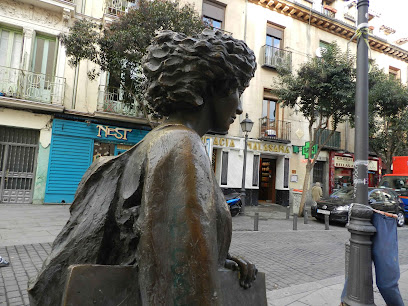
calle de la sal
Explore the historic Calle de la Sal in Madrid, where culture, cuisine, and captivating architecture intertwine for an unforgettable experience.
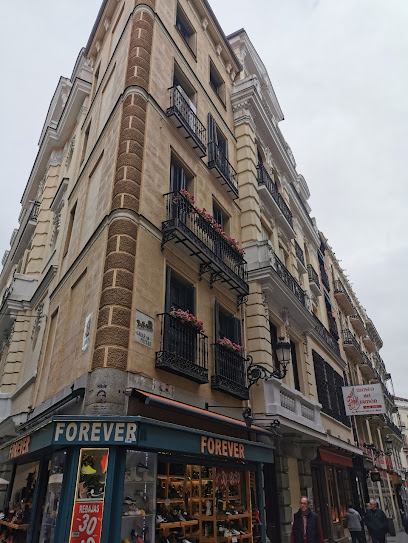
Estatua Joven Caminando en Malasaña
Discover the vibrant Statue of the Young Walker in Malasaña, a symbol of Madrid's creative spirit in a lively artistic neighborhood.
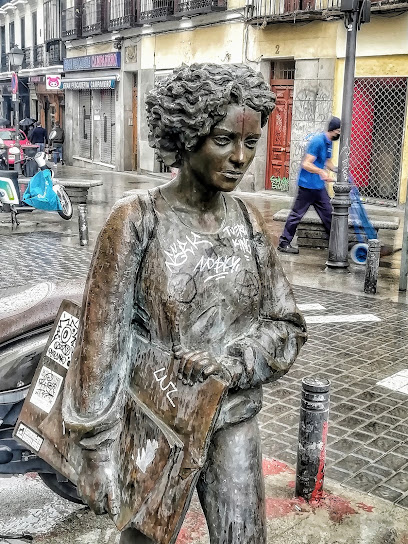
Graffiti
Discover Madrid's vibrant graffiti scene, where every wall is a canvas showcasing the city's rich culture and artistic expression.
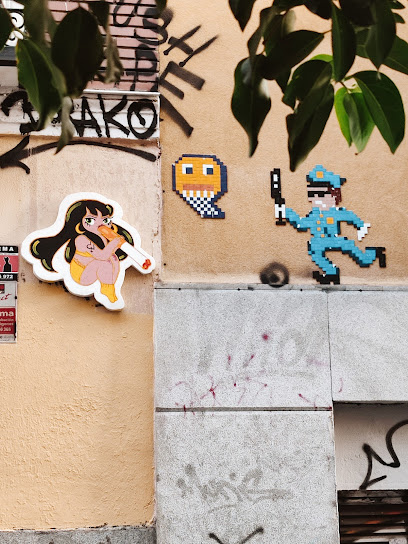
Placa de Inauguración del Museo
Explore the Placa de Inauguración del Museo in Madrid, a stunning tribute to stone carving and a cultural gem in the heart of the city.
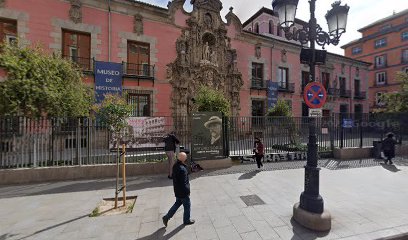
Unmissable attractions to see
Plaza de España
Explore Plaza de España, a historical landmark in Madrid, surrounded by stunning architecture and vibrant culture, perfect for all travelers.
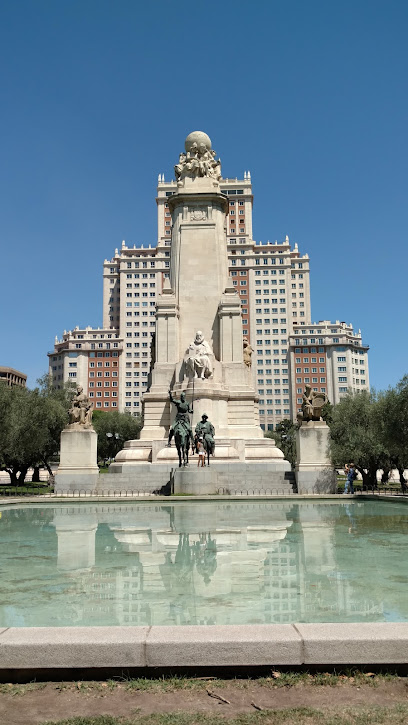
Royal Palace of Madrid
Explore the grandeur of the Royal Palace of Madrid, a historic landmark showcasing Spain's rich royal heritage and stunning architecture.
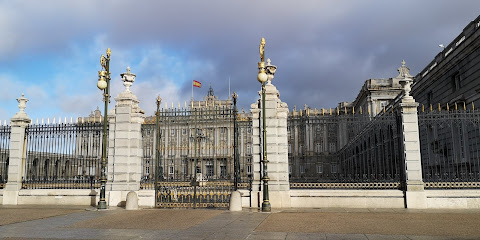
Temple of Debod
Discover the Temple of Debod, an ancient Egyptian monument in Madrid, offering stunning views and rich history amidst beautiful gardens.
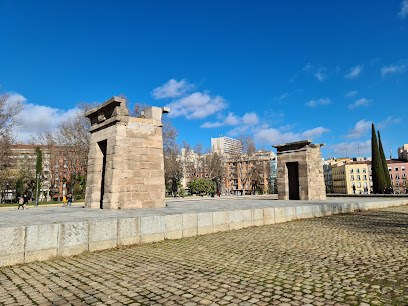
Sabatini Garden
Explore the serene beauty of Sabatini Garden in Madrid, a perfect escape with stunning views and lush landscapes near the Royal Palace.
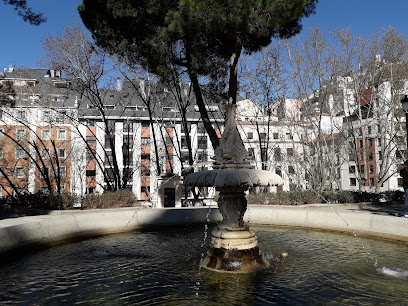
Plaza de la Luna
Explore the historic and vibrant Plaza de la Luna, a must-visit attraction in the heart of Madrid, where culture and charm intertwine.
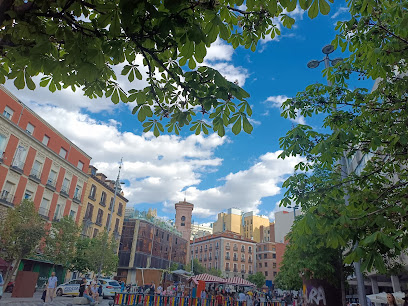
Fuente del Cielo
Experience the serene beauty of Fuente del Cielo, a captivating fountain surrounded by lush gardens in the heart of Madrid.
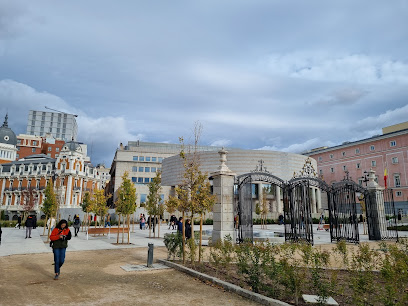
Esculturas y Monumentos de Madrid
Discover the rich artistic heritage of Madrid at Esculturas y Monumentos, where history and creativity come alive through captivating sculptures and monuments.
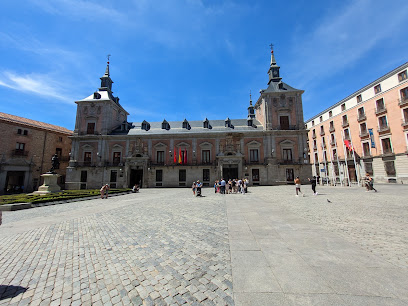
Essential places to dine
Lamucca de Pez
Discover Lamucca de Pez: A top-rated restaurant in Madrid serving exquisite brunches and artisanal pizzas in a vibrant atmosphere.
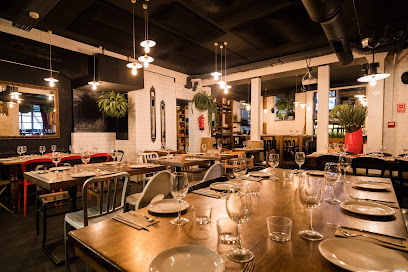
Ochenta Grados Malasaña
Discover innovative flavors at Ochenta Grados Malasaña, where global cuisine meets local ingredients in a vibrant Madrid setting.
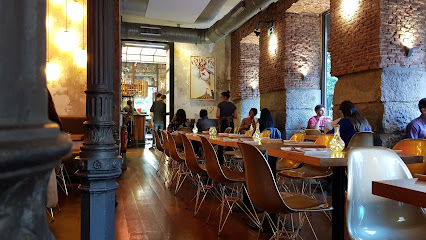
La Musa Malasaña
Experience culinary innovation at La Musa Malasaña - where traditional Spanish flavors meet global influences in a vibrant setting.
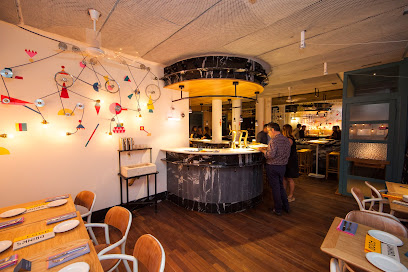
El Perro y la Galleta Malasaña
Discover the vibrant flavors of Spain at El Perro y la Galleta Malasaña, where tradition meets modernity in every dish.
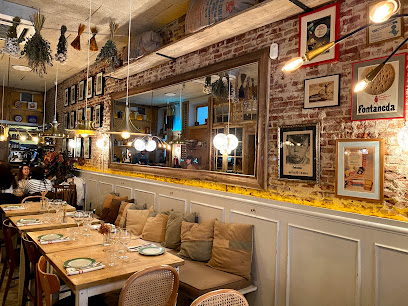
Tapería de Malasaña
Experience authentic Spanish tapas in the vibrant heart of Madrid at Tapería de Malasaña - where every bite tells a story.
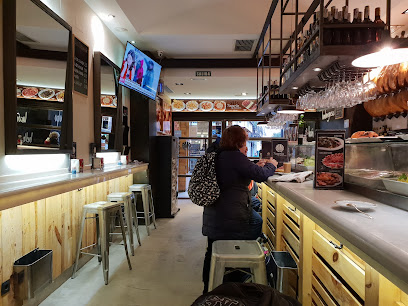
Desengaño 13: Restaurante de fusión en Malasaña
Experience innovative Mediterranean fusion cuisine at Desengaño 13 in Malasaña—where every dish tells a story.
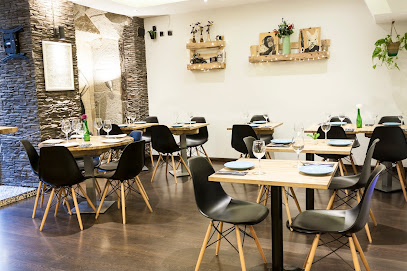
El Balcón de Malasaña
Discover El Balcón de Malasaña, where Mediterranean flavors meet Madrid's vibrant culture in a cozy setting perfect for any occasion.

EatMyTrip Brunch & Dinner Madrid
Discover the vibrant flavors of Madrid at EatMyTrip - where brunch meets culinary creativity in the heart of Malasaña.
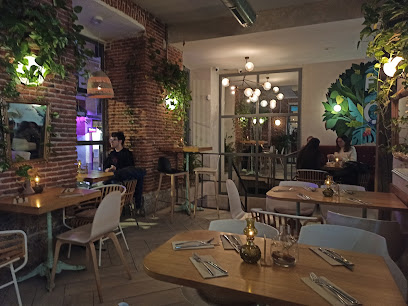
Casa Maravillas
Experience authentic grilled cuisine in the heart of Madrid at Casa Maravillas - where flavor meets tradition.
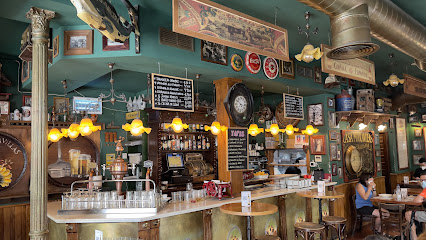
Triada Malasaña
Experience authentic Spanish flavors at Triada Malasaña - where tradition meets modern culinary art in the heart of Madrid.
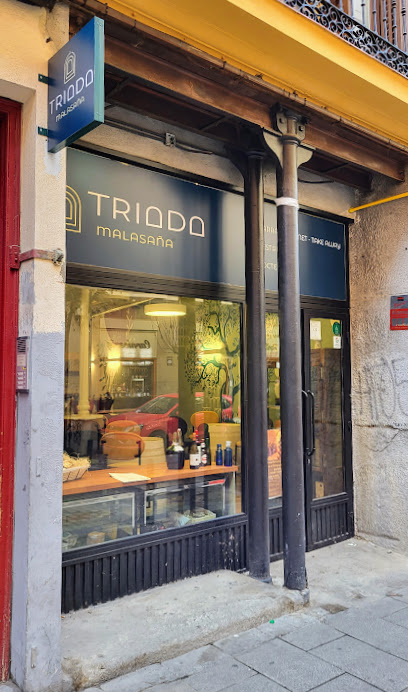
Markets, malls and hidden boutiques
Magpie Vintage
Explore Madrid's unique vintage treasure at Magpie Vintage, where fashion meets history in a charming shopping experience.
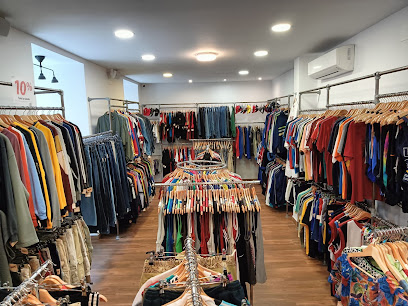
Popland
Explore the whimsical charm of Popland in Madrid, a novelty store filled with unique souvenirs, playful toys, and colorful posters that spark joy.
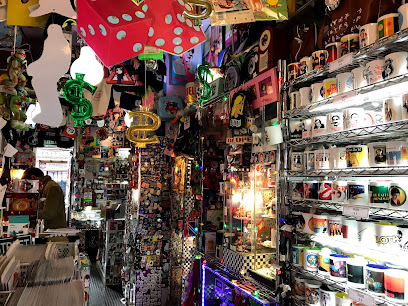
La Antigua
Explore La Antigua, Madrid's boutique haven for handcrafted treasures and unique Spanish artistry in the heart of the Centro district.
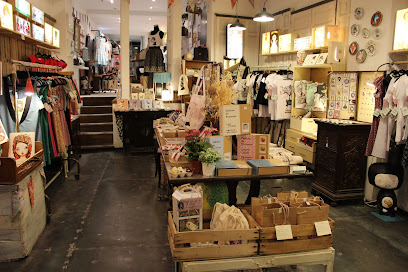
Temple Susu
Discover unique vintage finds at Temple Susu, a charming clothing store in Madrid's Centro district, blending history and style.

Aramayo Vintage MADRID
Explore Aramayo Vintage in Madrid for a unique shopping experience filled with timeless fashion treasures and eclectic styles.
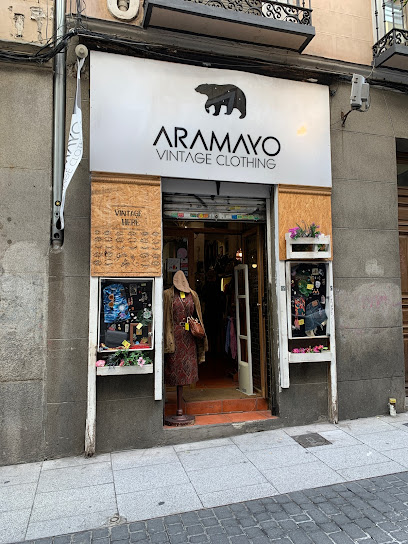
The Intruder Malasaña
Explore The Intruder Malasaña, a unique clothing store in Madrid's vibrant Malasaña district, offering eclectic and alternative fashion styles.
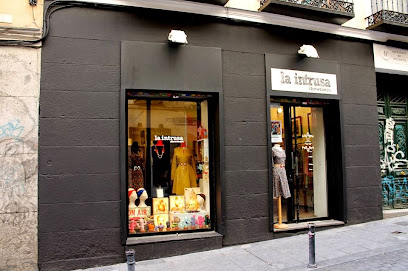
Alphaville Vintage Shop Tienda Vintage Malasaña
Explore Alphaville Vintage Shop in Malasaña for unique fashion finds and a nostalgic journey through retro style in the heart of Madrid.

Miss Vintage
Explore unique vintage fashion at Miss Vintage in Madrid, where timeless styles and eclectic treasures await every fashion lover.

GF21 Madrid Concept Store
Explore the latest trends and local styles at GF21 Madrid Concept Store, a fashion haven in the heart of the vibrant Malasaña district.
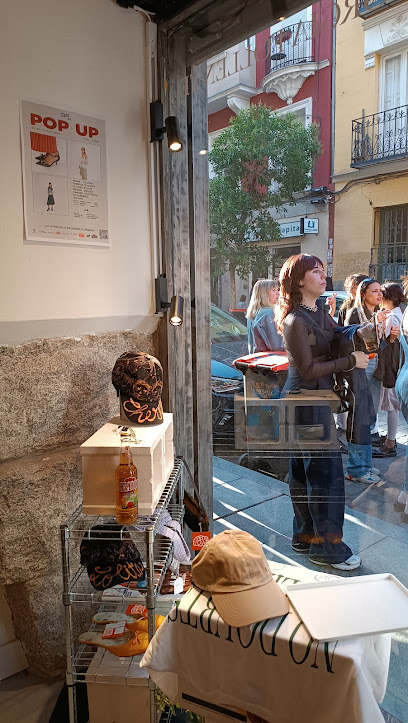
peSeta - tienda Malasaña
Explore peSeta in Malasaña: a haven for unique gifts and authentic local craftsmanship in the heart of Madrid.
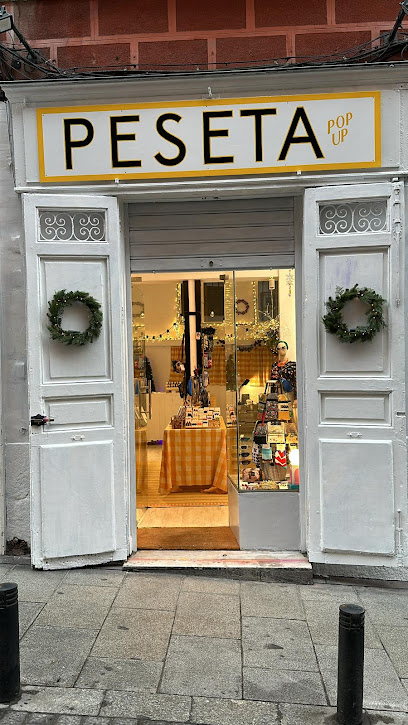
Essential bars & hidden hideouts
La Vía Láctea
Experience the vibrant nightlife of Madrid at La Vía Láctea, an iconic pub known for its lively atmosphere and extensive drink selection.
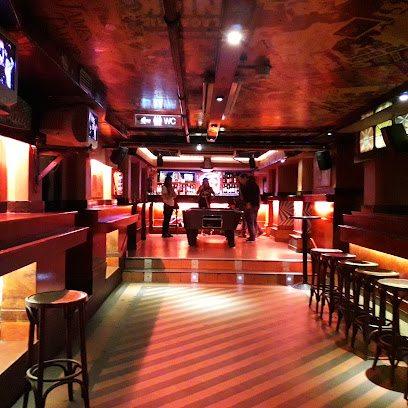
Gorila Malasaña
Discover Gorila Malasaña, a charming bar in Madrid's vibrant district, offering a delightful selection of craft beers and cocktails in a quirky atmosphere.
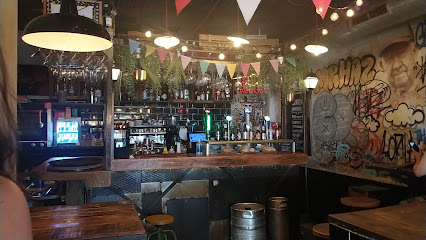
Picnic
Discover Picnic, a vibrant bar in Madrid's Centro district, known for its eclectic decor, friendly staff, and affordable drinks, perfect for tourists!
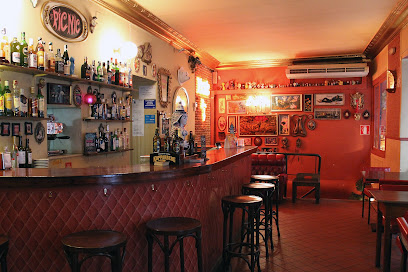
Espit Chupitos
Discover the vibrant nightlife of Madrid at Espit Chupitos, known for its creative shots and electric atmosphere, perfect for an unforgettable night out.
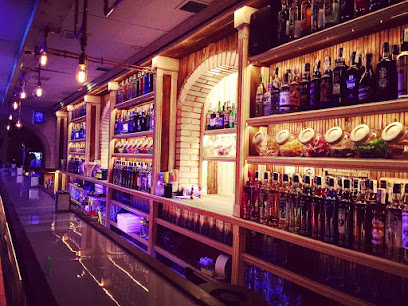
Aleatorio Bar
Experience the vibrant nightlife of Madrid at Aleatorio Bar, where delicious cocktails meet captivating performances in a cozy setting.
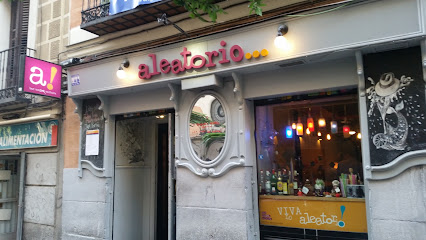
Diplodocus
Discover Madrid's nightlife at Diplodocus, a rock music club and bar offering an eclectic atmosphere and unforgettable live performances.

CLAVEL
Experience the vibrant nightlife of Madrid at CLAVEL, the perfect bar for signature cocktails and a lively atmosphere.
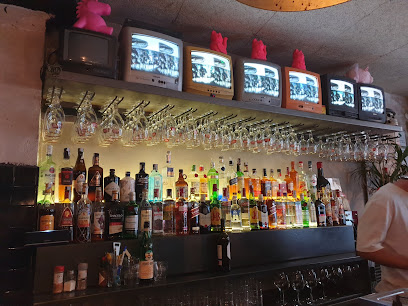
▷ GATO - Bar en Malasaña, Madrid
Discover GATO, an eclectic brewpub in the heart of Malasaña, Madrid, offering craft beers and delectable tapas in a vibrant atmosphere.
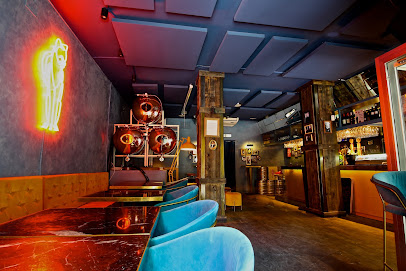
Weirdo Bar
Discover the vibrant and eclectic Weirdo Bar in Madrid, where creative cocktails meet a lively atmosphere for an unforgettable night out.
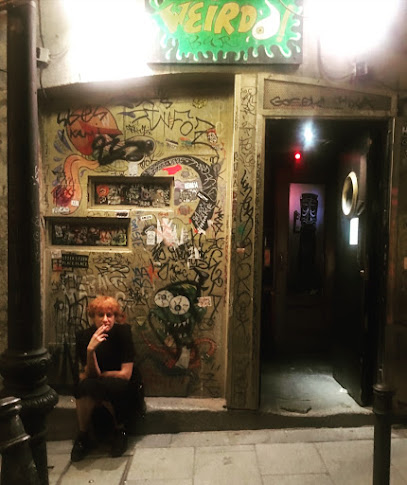
Destino Malasaña
Experience the vibrant nightlife of Madrid at Destino Malasaña, an eclectic pub in the heart of the trendsetting Malasaña district.
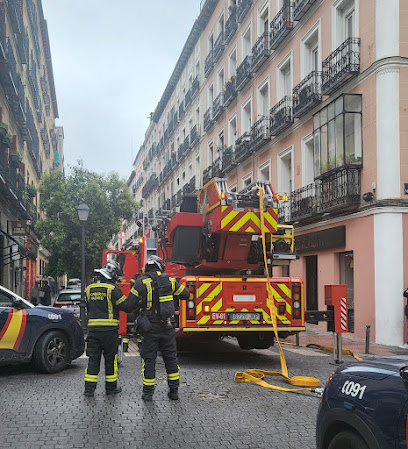
Local Phrases
-
- HelloHola
[oh-lah] - GoodbyeAdiós
[ah-dee-ohs] - YesSí
[see] - NoNo
[noh] - Please/You're welcomePor favor/De nada
[por fah-vor/deh nah-dah] - Thank youGracias
[grah-see-ahs] - Excuse me/SorryPerdón/Lo siento
[pair-dohn/loh see-en-toh] - How are you?¿Cómo estás?
[koh-moh ehs-tahs] - Fine. And you?Bien. ¿Y tú?
[byen. ee too] - Do you speak English?¿Hablas inglés?
[ah-blahs een-glays] - I don't understandNo entiendo
[noh ehn-tee-ehn-doh]
- HelloHola
-
- I'd like to see the menu, pleaseMe gustaría ver la carta, por favor
[meh goo-stah-ree-ah ver lah kar-tah, por fah-vor] - I don't eat meatNo como carne
[noh koh-moh kahr-neh] - Cheers!¡Salud!
[sah-loohd] - I would like to pay, pleaseQuisiera pagar, por favor
[kee-see-eh-rah pah-gahr, por fah-vor]
- I'd like to see the menu, pleaseMe gustaría ver la carta, por favor
-
- Help!¡Ayuda!
[ah-yoo-dah] - Go away!¡Vete!
[veh-teh] - Call the Police!¡Llama a la Policía!
[yah-mah ah lah poh-lee-thee-ah] - Call a doctor!¡Llama a un médico!
[yah-mah ah oon meh-dee-koh] - I'm lostEstoy perdido/a
[ehs-toy pair-dee-doh/ah] - I'm illEstoy enfermo/a
[ehs-toy ehn-fehr-moh/ah]
- Help!¡Ayuda!
-
- I'd like to buy...Me gustaría comprar...
[meh goo-stah-ree-ah kohm-prahr] - I'm just lookingSolo estoy mirando
[soh-loh ehs-toy mee-rahn-doh] - How much is it?¿Cuánto cuesta?
[kwan-toh kwehs-tah] - That's too expensiveEs demasiado caro
[ehs deh-mah-syah-doh kah-roh] - Can you lower the price?¿Puedes rebajar el precio?
[pweh-dehs reh-bah-har ehl preh-syo]
- I'd like to buy...Me gustaría comprar...
-
- What time is it?¿Qué hora es?
[keh oh-rah ehs] - It's one o'clockEs la una en punto
[ehs lah oo-nah ehn poon-toh] - Half past (10)Son las diez y media
[sohn lahs dyehs ee meh-dee-ah] - MorningMañana
[mah-nyah-nah] - AfternoonTarde
[tahr-deh] - EveningNoche
[noh-cheh] - YesterdayAyer
[ah-yehr] - TodayHoy
[oy] - TomorrowMañana
[mah-nyah-nah] - 1Uno
[oo-noh] - 2Dos
[dohs] - 3Tres
[trehs] - 4Cuatro
[kwah-troh] - 5Cinco
[theen-koh] - 6Seis
[says] - 7Siete
[syeh-teh] - 8Ocho
[oh-choh] - 9Nueve
[nweh-veh] - 10Diez
[dyehth]
- What time is it?¿Qué hora es?
-
- Where's a/the...?¿Dónde está...?
[dohn-deh ehs-tah] - What's the address?¿Cuál es la dirección?
[kwal ehs lah dee-rehk-syon] - Can you show me (on the map)?¿Puedes mostrarme (en el mapa)?
[pweh-dehs mohs-trar-meh (ehn el mah-pah)] - When's the next (bus)?¿Cuándo es el próximo (autobús)?
[kwan-doh ehs ehl proh-ksee-moh (ow-toh-boos)] - A ticket (to ....)Un billete (a ...)
[oon bee-yeh-teh (ah ...)]
- Where's a/the...?¿Dónde está...?
History of Malasana
-
Malasaña, named after the 19th-century heroine Manuela Malasaña, has its roots in the 16th century when it began as a working-class neighborhood. Its proximity to the center of Madrid allowed it to flourish, attracting artisans and merchants. By the 18th century, it was known for its vibrant street life and local markets.
-
During the early 1800s, Malasaña played a significant role in the Spanish War of Independence against French occupation. The neighborhood was a site of resistance, with local citizens participating in uprisings. The events of May 2, 1808, famously depicted in Goya's paintings, marked a turning point in Spanish history, with Malasaña becoming a symbol of the struggle for freedom.
-
In the late 1970s and 1980s, Malasaña emerged as the epicenter of the Movida Madrileña, a countercultural movement that celebrated freedom, creativity, and rebellion following Franco's dictatorship. The neighborhood became a hub for artists, musicians, and intellectuals, giving rise to a vibrant nightlife and a new wave of Spanish pop culture.
-
As the 20th century progressed, Malasaña saw significant urban development and gentrification. Traditional buildings were renovated, and new businesses catering to a younger crowd took root. The blend of historical architecture with modern cafes, vintage shops, and art galleries reflects the neighborhood's ongoing transformation while preserving its rich cultural heritage.
-
Today, Malasaña is known as a bastion of alternative culture in Madrid. The neighborhood hosts numerous cultural events, art exhibitions, and music festivals, maintaining its reputation as a creative space. The annual 'Malasaña Festival' celebrates local artists and musicians, drawing visitors from across the city and beyond.
Malasana Essentials
-
Malasaña is conveniently located in the heart of Madrid, making it easily accessible from other neighborhoods. You can reach Malasaña via the Madrid Metro by taking Line 1 (the light blue line) to Tribunal or Line 10 (the dark blue line) to Noviciado. Buses also serve the area with several routes stopping at key points. If you prefer walking, it's a short stroll from neighboring districts like Chueca, Malasaña, and Gran Vía.
-
Malasaña is a compact neighborhood best explored on foot, allowing you to soak in its vibrant street art and local shops. The area is well-served by public transport, including the metro and buses. For a more local experience, consider renting a bicycle from one of the many bike-sharing services available throughout the city. Taxis are also readily available, and ride-hailing apps like Cabify and Uber operate in the area.
-
Malasaña is generally a safe neighborhood for tourists, but like any urban area, it is wise to remain cautious. Avoid poorly lit streets at night and be aware of your belongings in crowded places. Petty crimes such as pickpocketing can occur, particularly around popular tourist spots. Areas near the metro stations may require extra vigilance. Always stay alert, especially in nightlife hotspots.
-
In case of emergency, dial 112 for police, fire, or medical assistance in Spain. The nearest hospital is Hospital Clínico San Carlos, and there are various clinics and pharmacies throughout Malasaña. It is advisable to have travel insurance that covers medical emergencies. For minor health issues, local pharmacies can provide over-the-counter medications.
-
Fashion: Do dress comfortably but stylishly; locals appreciate a good sense of fashion. Don't wear overly casual or revealing clothing when visiting restaurants or cafés. Religion: Do respect local customs, especially if visiting churches. Public Transport: Do be courteous and give up your seat to those in need. Don't talk loudly or eat on public transport. Greetings: Do greet with a friendly 'Hola' and a smile. Don't assume familiarity; use formal greetings until you know someone better. Eating & Drinking: Do try local tapas and enjoy drinks at outdoor terraces. Don't rush your meal; dining is a leisurely experience.
-
To experience Malasaña like a local, visit one of the many quirky cafés and vintage shops scattered throughout the neighborhood. Participate in local events or festivals if your visit coincides with one, as they showcase the vibrant culture of the area. Check out the Mercado de San Ildefonso for a modern take on a food market. Engage with locals to discover hidden gems that are not widely known to tourists, and take the time to enjoy the street art that adorns many buildings.
Trending Landmarks in Malasana
Nearby Cities to Malasana
-
Things To Do in Segovia
-
Things To Do in Toledo
-
Things To Do in Avila
-
Things To Do in Valladolid
-
Things To Do in Salamanca
-
Things To Do in Burgos
-
Things To Do in Teruel
-
Things To Do in Zaragoza
-
Things To Do in Bragança
-
Things To Do in Valencia
-
Things To Do in Pamplona
-
Things To Do in Bilbao
-
Things To Do in Badajoz
-
Things To Do in Huesca
-
Things To Do in Santander











